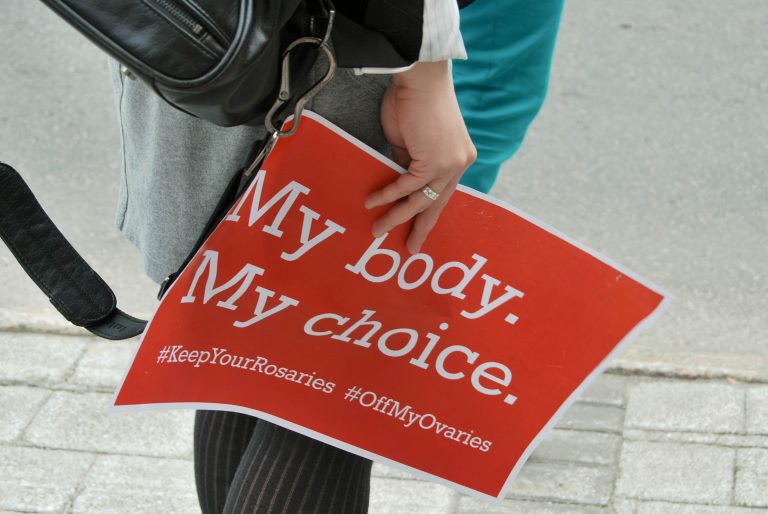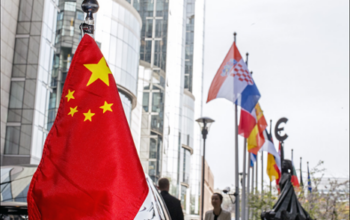Is the state planning your family for you?
As many political historians or demographers would confirm, state interest in the fertility of its citizens is not merely a recent phenomenon. But when can we speak of interest and where does it cross the boundary of interference? How does the state influence or limit our choices, directly or indirectly, and what are the consequences of it to the individual or a group of people? The level of interference does not have to reach the horrors of the work of Dr. Mengele, or equal the dystopian fiction envisioned in The Handmaid’s Tale, to be of significance to the life of a citizen, a family, or even a specific demographic segment. Should our right to family life be a private or a public matter?
The international organizations on the matter
The Office of the High Commissioner for Human Rights offers information related to sexual and reproductive rights, but addresses these rights largely from the perspective of gender-based discrimination against women. Amnesty International, without distinction to location or status, demands that “all the decisions made about your own body should be yours.”
Certainly, many choices related to human fertility have to do with the female body, which is why limitations to the access to e.g. sex education and family planning; contraceptives; legal abortion and professional reproductive health services; protection from forced marriage, sterilization or pregnancy; help for victims of rape; can all lead to an unproportionate private burden. Whether the limitation is a question of means or culture is perhaps indifferent to the ones affected.
China and the extreme example of family planning policy
After over three decades of the well-known one-child policy, China is maintaining its interest in the fertility of its citizens, and examining the outcome of the 2016 introduction of the two-child policy. It appears, the loosening of the restrictions on family size, however, has not resulted in the desired increase in birth rates. The official Year of the Pig stamps release one year ago even led to speculation whether the Chinese government has further policy reforms in mind.
In addition to the former policy, the changes in the Chinese society, the fierce competition for success, as well as the increased quality of life and education, have contributed to the decrease of the desired family size. One child per family was long strictly enforced and gradually became accepted as the norm. There is further criticism that China is not changing its legislation for the freedom of the people, but as a means to an end: to experiment with its population and to keep the wheels of the economy spinning at a desirable rate.
For those who lived their reproductive age under the one-child policy, the only child may represent the sole hope for the future. The loss of an only child is devastating, and has been estimated to have been the fate of one million of aged Chinese parents by 2015, expected to reach 11 million by 2050. There’s even a Chinese term to describe them, they are shidu fumu (“bereaved parents”). There are suggestions that the shiduers suffer from a more intense form of grief due to the importance of family in Chinese culture, and seem to even have developed strategies to spend family holidays in the company of others who’ve suffered the same fate.

The right to abortion – an ongoing discussion
Whereas the above discussed limitations on family size are an example of direct state interference with fertility, there is an ongoing debate about the legal rights of women to terminate an unintended pregnancy. When Brett Kavanaugh was nominated the Associate Justice of the Supreme Court of the United States, many feared what his nomination could mean for millions of women. The speculation on whether he could help overturn Roe v. Wade peaked after the vote on abortion legislation in Alabama.
The vote in Alabama also brought up questions on intersectionality. Rightfully so, as the votes in favor were cast by white males. Those facing the direct impacts of banning legal abortion in the state are women, often of lesser means, and of color. Using the CDC Abortion Surveillance data from 2015, in the United States nearly half of the voluntary terminations of pregnancy were requested by black women, the Hispanic at a slightly higher rate than the white.
Social inequality leads to reduced access to proper medical care and contraception, which goes hand in hand with increased demand for safe medical help in termination of unintended pregnancy. By denying the access of disadvantaged women to the latter, a situation occurs where the same basic right is in fact denied twice. The results of the policy having the potential to become fatal for many.

The policy of lack of policy
Beside the obvious interventions in female reproductive behaviour, it is possible to affect our family size through subtle policies and decisions. Logically, it seems to matter whether and how the state incentivizes parenthood by paid parental leaves. Or whether we feel our concerns for the future are adequately answered by the state in order for us to have a family of our own.
The University of Lund hit a nerve when it published a 2017 study on the four lifestyle choices of the individual that would significantly reduce one’s carbon footprint. The study concluded that in developed countries the most effective way to reduce individual carbon footprint is to have one less child, with the reservation that if overall national emissions decrease, so would the value on cumulative emissions from descendants.
The study did not comment on refraining from having any children at all but compared the effects of different types of reduction. The reaction of some was to conclude that voluntary childlessness is the most environmentally friendly choice to make.
A Finnish climate correspondent, journalist and mother commented on the idea and asked whom are we saving the planet for if not a future generation. Similarly, she argued that her personal carbon footprint has in fact decreased as a mother, due to increased interest for the environment and decreased interest in consumerism. But what if the inaction many governments have recently been accused of, in response to climate change, is reason enough to see the world as too uncertain to become a parent?

The future, an open-ended question
As a response, to defend its interests of a “demographically balanced” population structure, it may be a dire necessity for the state to come up with renewed strategies to stimulate and not simply regulate the behaviour of its citizens. And as much as the state impacts our reproductive behaviour, it is certainly not the only one. Without getting into a debate about the role of culture in our individual choices, it is relevant to recognize that there are concurrent developments with those dictated by the state. Yet, as intrusively personal as the question might be, the state will without a doubt continue asking you: Are you going to have children?
by Johanna Laaksonen
Photo credits
Heron, Pixabay
Her duty, Gauthier Delecroix, CC BY 2.0
Counter March Pro-Choice Rally, Zhu, CC BY-NC 2.0
Hand Earth to Next Generation, Pixabay










